|
|
|
|
|
Point Down |
|
This part of the tutorial will present the steps for weaving the “point down” arrowhead pattern when the warp strand that is to the right of the middle of the work-piece is in the top layer of the shed.
[NOTE] Before starting be sure that you are proficient in the configuration used to produce the pattern with out beads. [NOTE] The weaving for each row will start in the middle of the work-piece. [NOTE] The interlocks on the right side of the work-piece are made with warp strands from the bottom layer of the shed. [NOTE] The interlocks on the left side of the work-piece are made with warp strands from the top layer of the shed. |
| Start Tutorial |
|
Headstick Setup Configuration
The warp strand that is to the right of the middle is in the top layer of the shed. There are four arrowhead colored warp strands that are bead carrier strands.The two middle warp strands and the two side warp strands. |
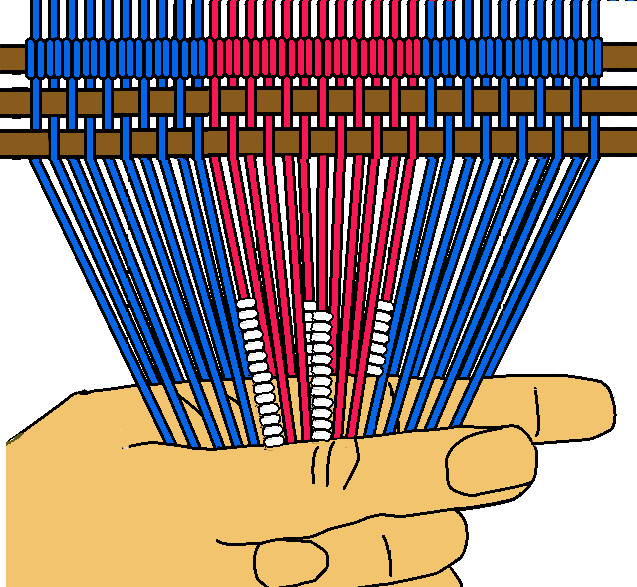
|
| Previous | Next |
|
[OBSERVE] When the project is completed, there is an equal number of beads on each side of the arrow point.
This is because there is one bead for each time the warp bead carrier strand crosses a weft strand. The beads are visiable on both sides of the workpiece. |
[figure-2]

|
| Previous | Next |
|
[NOTE] The weaving is based on the configuration for weaving with the warp strand to right of middle in top layer of the shed.
Find the middle of the work-piece. |
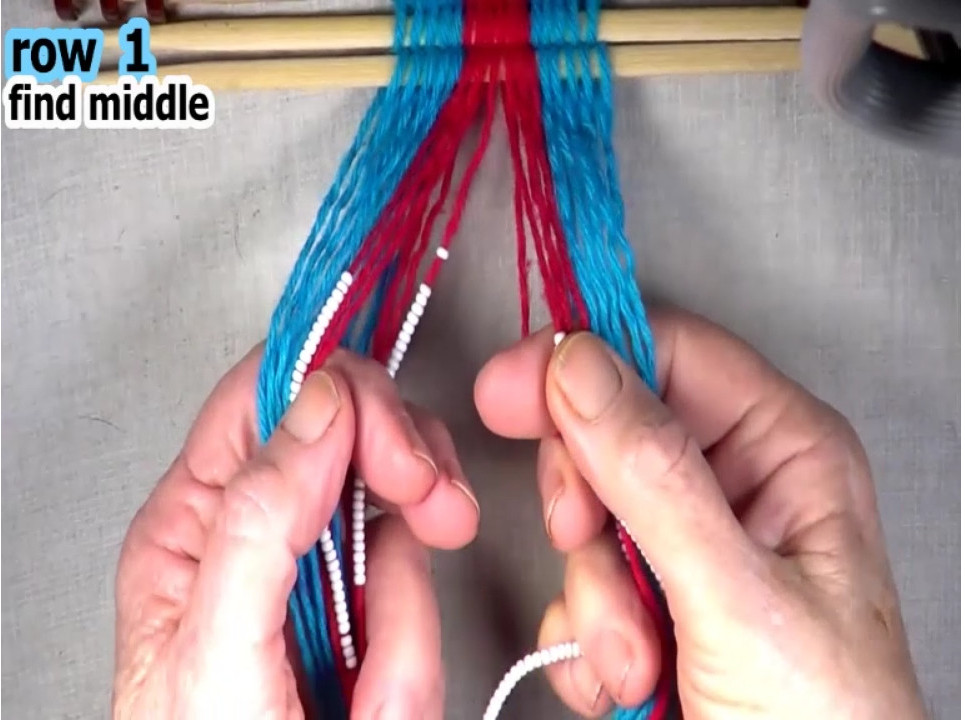
|
| Previous | Next |
Select the row 1 right hand side weft strand.
[NOTE] When starting a row of weaving, each row's right hand side weft strand is the first warp strand to the left of the middle of the work-piecce.
|
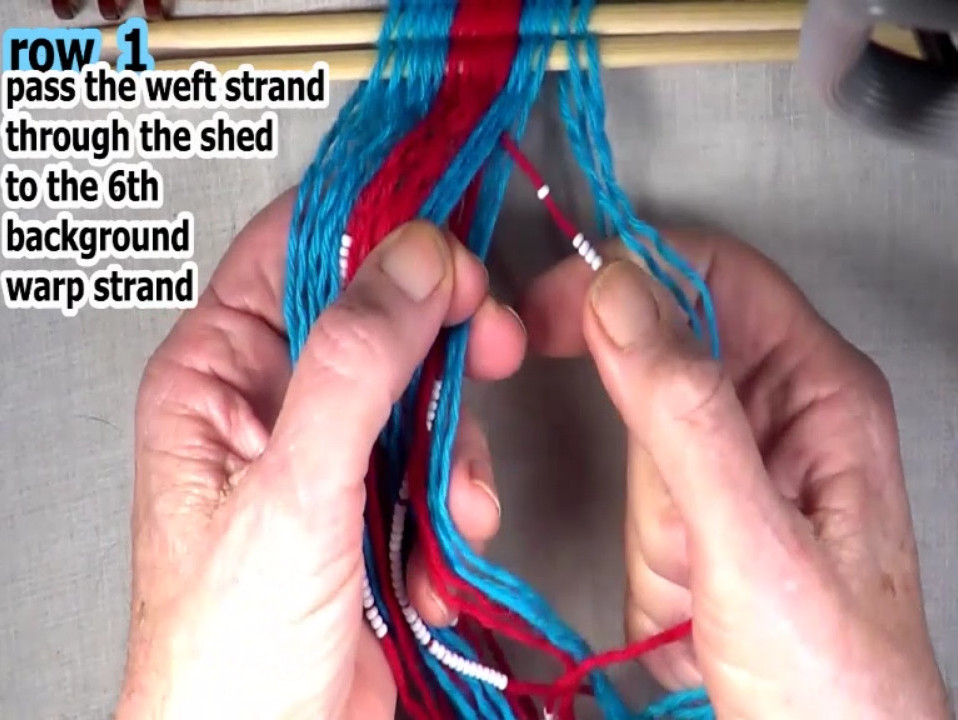
|
| Previous | Next |
Form the interlock in the row 1 right hand side weft strand.
Place the weft strand in the bottom layer of the shed.
[NOTE] The warp strand that was the 6th background color warp strand becomes the next segment of the row 1 right hand side weft strand. |
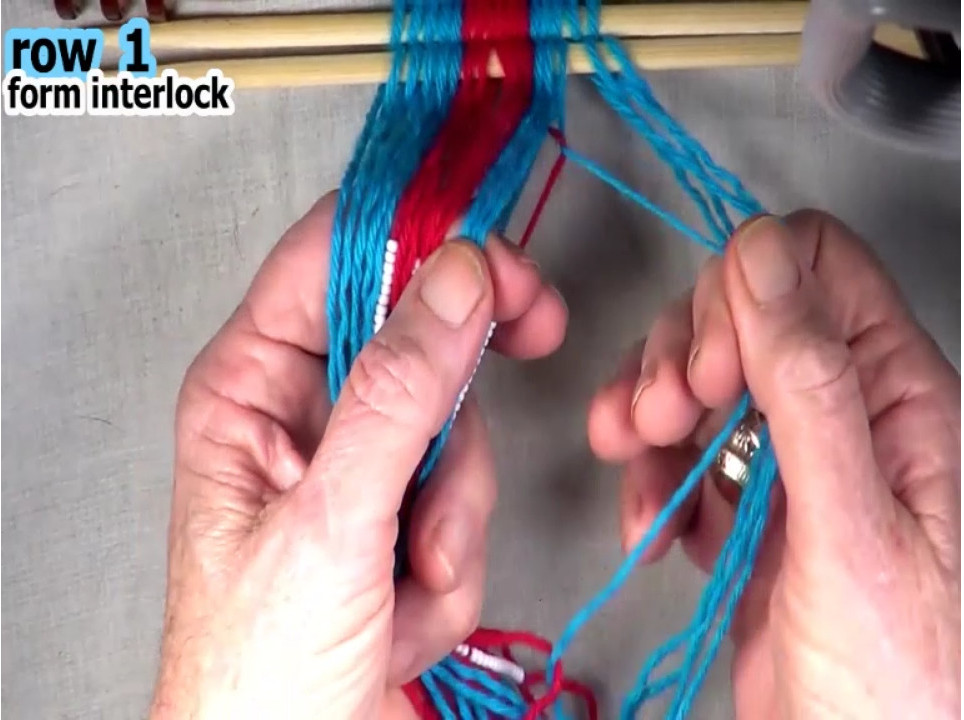
|
| Previous | Next |
|
Pass the weft strand through the right hand side shed to the right hand edge of the work-piece.
Secure the weft strand.
|

|
| Previous | Next |
Reverse the right hand side of row 1 shed to the background color warp strands.
[NOTE] make sure that the over/under configuration is maintained. Keep the warp strands parallel. Place a bead by sliding it along the carrier strand to its desired position.
|
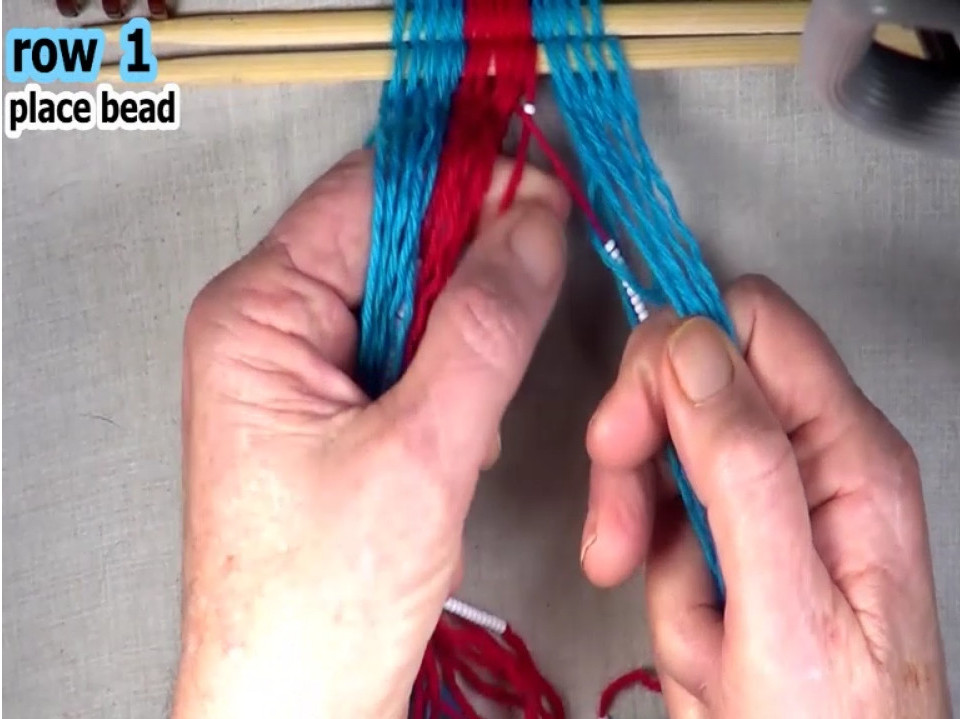
|
| Previous | Next |
|
Finish reversing the right hand side shed.
Find the middle of the work-piece. Secure the weft strand. Transfer the right hand side shed to the index finger of the right hand. |

|
| Previous | Next |
Select the left hand side row 1 weft strand.
[NOTE] When starting the left hand side of a row of weaving, each row's left hand side weft strand is the warp strand that was to the right of the middle of the work-piece. |
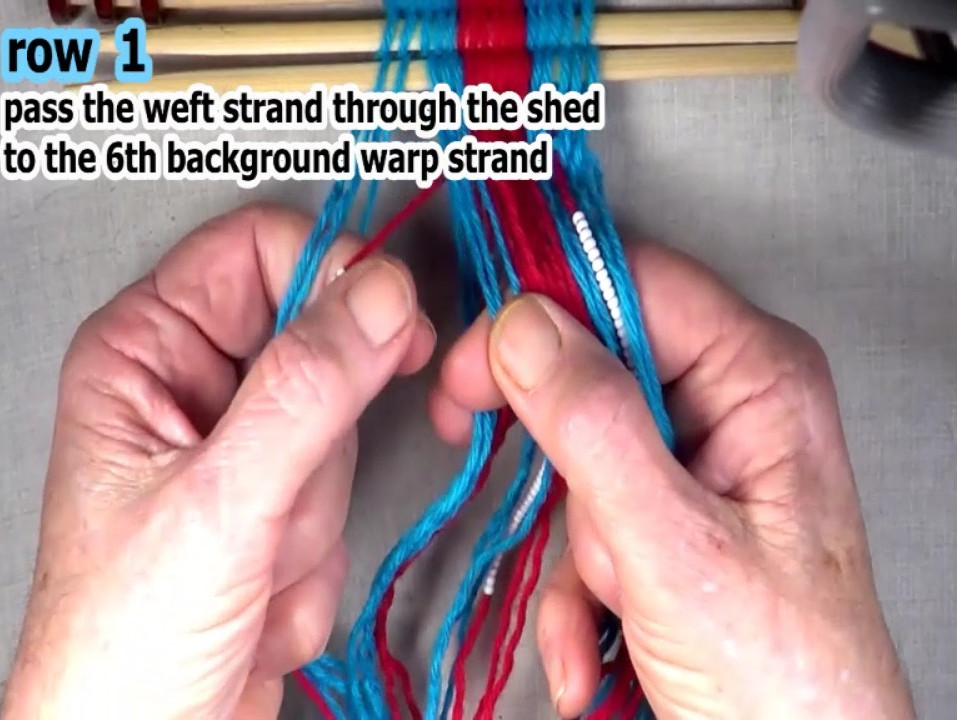
|
| Previous | Next |
Form the interlock in the row 1 left hand side weft strand.
Place the weft strand in the top layer of the shed. When the weft strand is placed in the top layer of the shed the weft strand becomes a warp strand. The warp strand that was the 6th background color warp strand becomes the next segment of the row 1 left side weft strand. Pass the weft strand through the shed to the left hand edge of the work-piece. Secure the row 1 left hand side weft strand. Transfer the left hand side shed to the left hand index finger. |
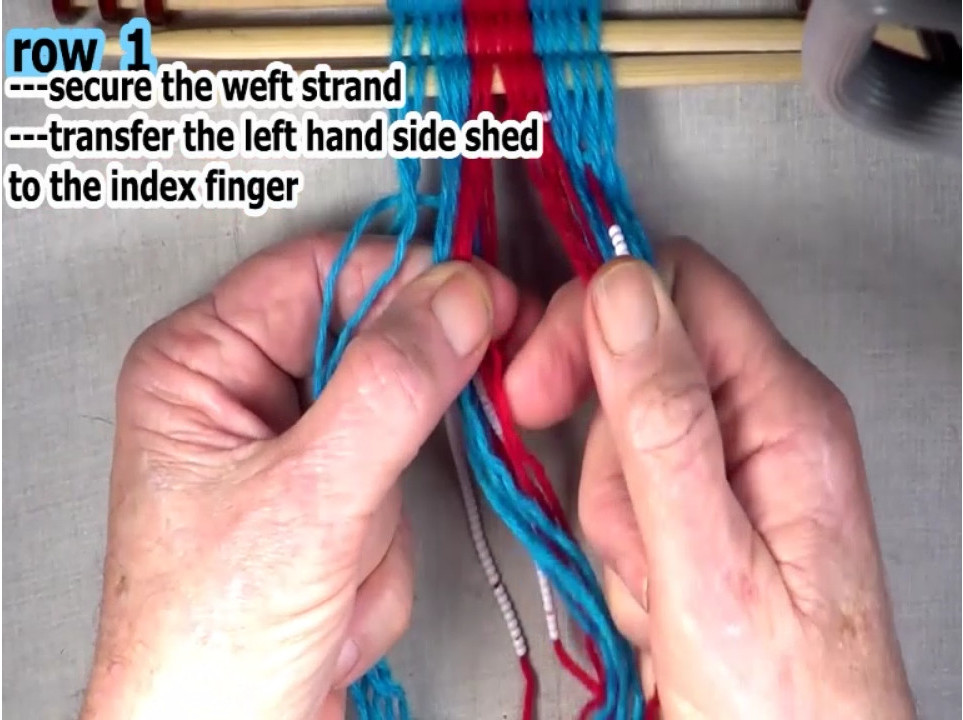
|
| Previous | Next |
Reverse the left hand side row 1 shed to the backgrond colored warp strands.
[NOTE] make sure that the over/under configuration is maintained. Keep the warp strands parallel.
|
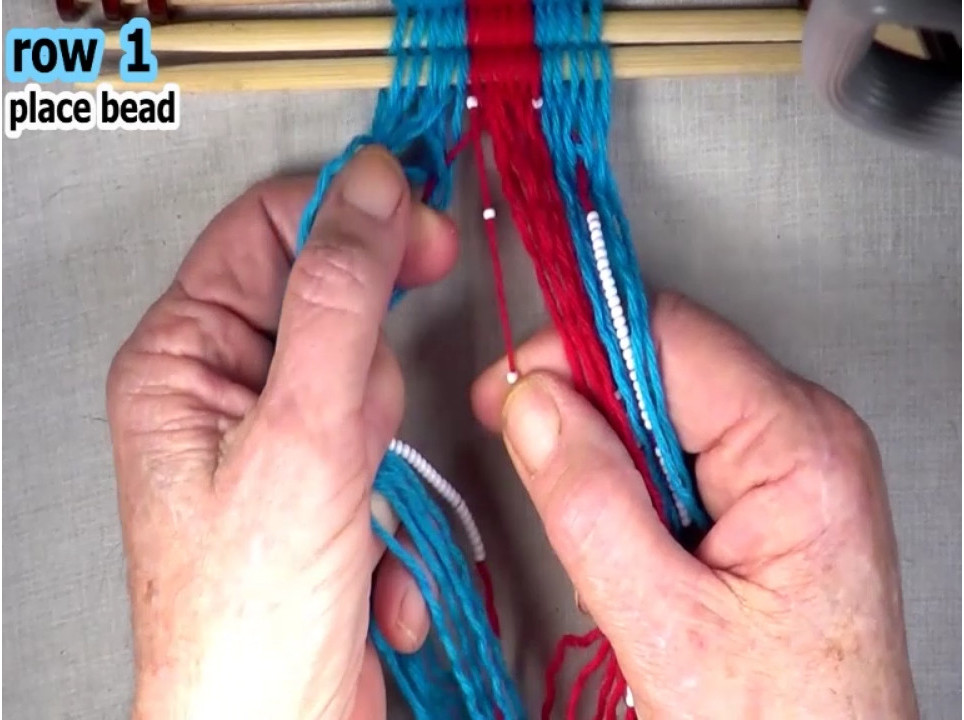
|
| Previous | Next |
|
Finish reversing the right hand side shed.
Set the row 1 weave.
Check individual strands to see that they are snug and even. Check to see that the beads are in their proper positions. [TIP] Use index finger as a beater. |

|
| Previous | Next |
|
Find the middle of the work-piece.
[NOTE] The row 1 weft strands cross each other at the middle of the work-piece. [OBSERVE]There are five arrowhead warp strands in the right hand side shed and 5 arrowhead warp strands in the left hand side shed. Select the row 2 right hand right side weft strand.
Pass the row 2 left hand side weft strand through the open shed to the interlock in row 1. |
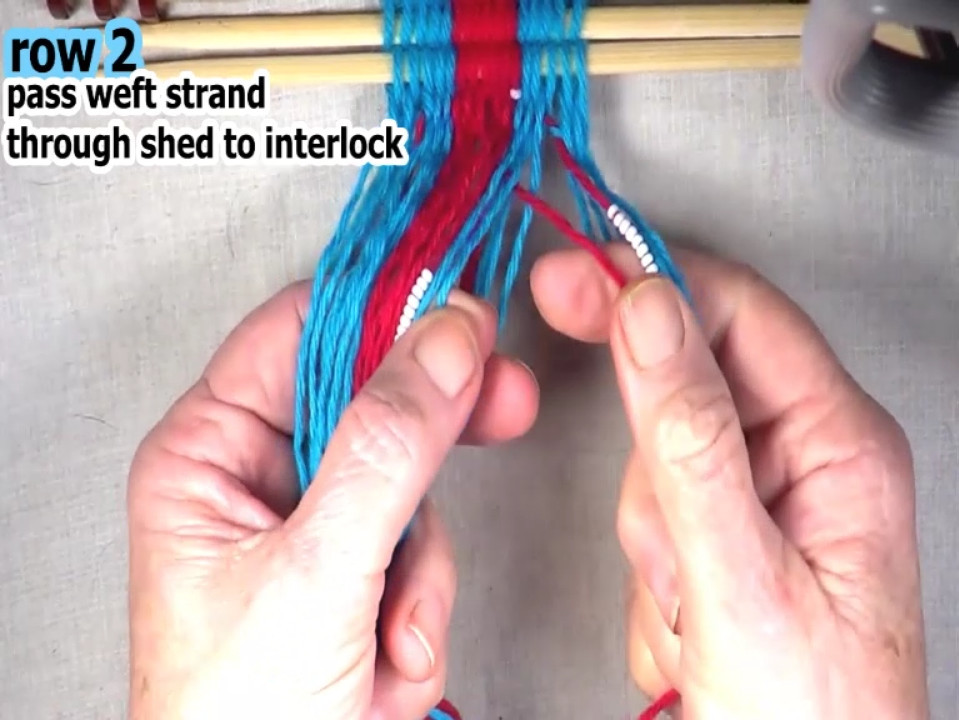
|
| Previous | Next |
Form the interlock in the row 2 right side weft strand.
Place the weft strand in the bottom layer of the shed. When the weft strand is placed in the bottom layer of the shed the weft strand becomes a warp strand. The interlocked warp strand becomes the next part of the weft strand.
|
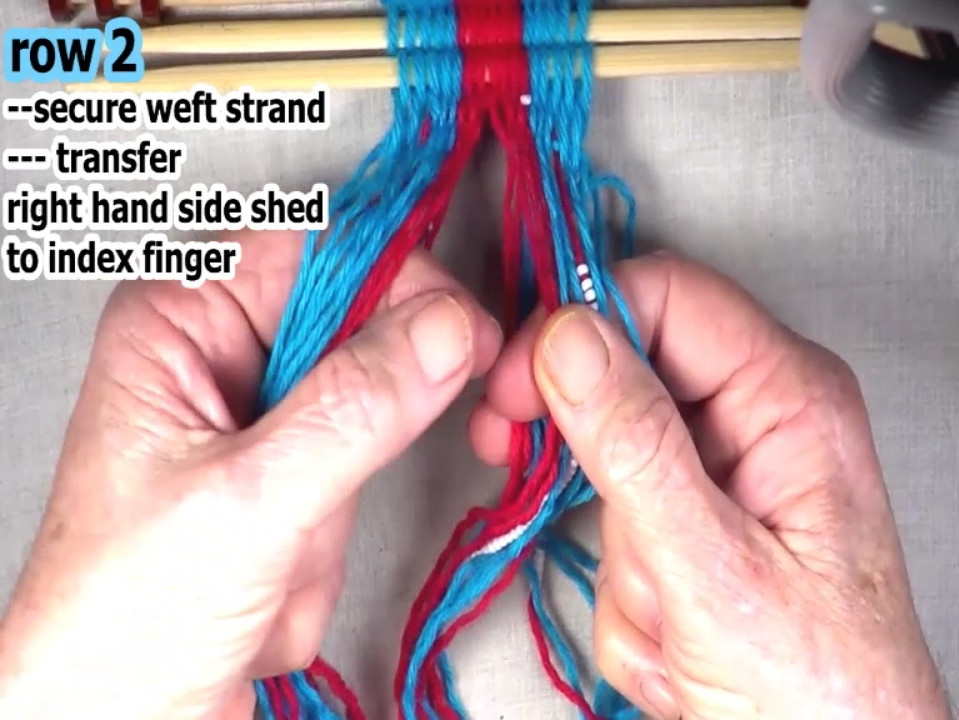
|
| Previous | Next |
|
Reverse the shed on the right hand side of row 2 to the first carrier strand.
Place a bead by sliding it along the carrier strand to it proper position.
|
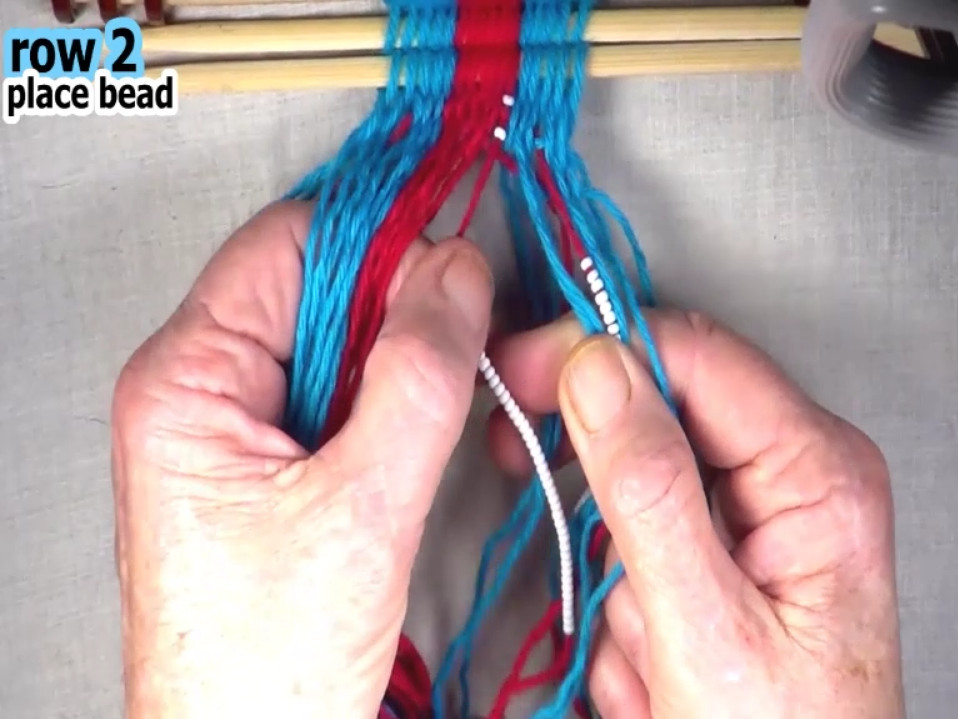
|
| Previous | Next |
|
Continue reversing the shed to the second bead carrier strand.
Place a bead by sliding it along the carrier strand to it proper position.
|
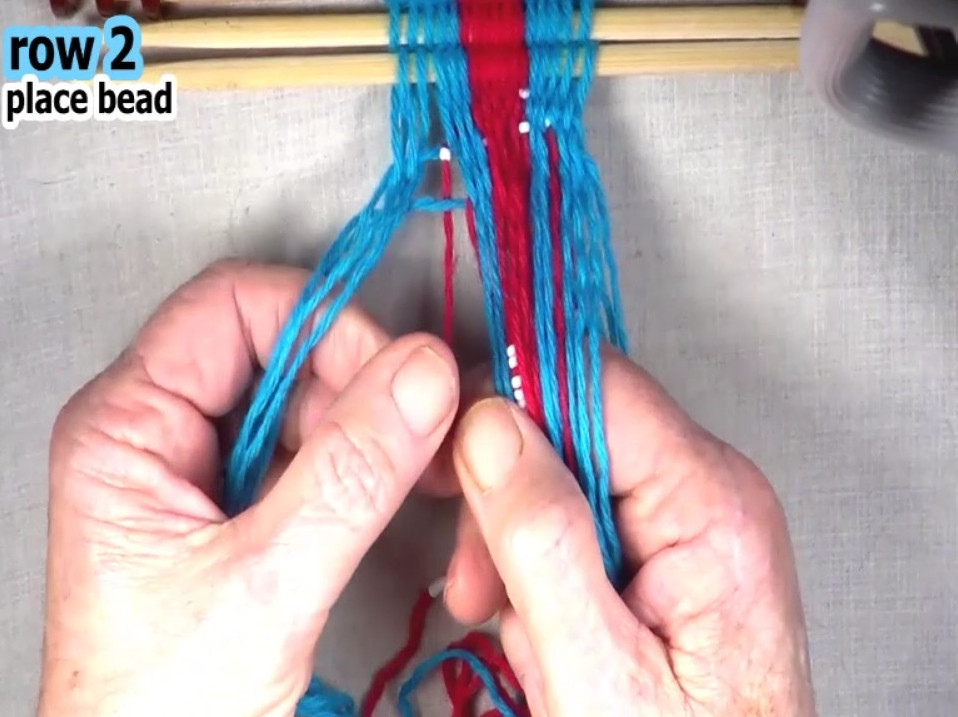
|
| Previous | Next |
|
Finish reversing the shed to the right hand edge.
Find the middle of the work piece by transferring the right hand side shed to the right hand index finger.
[OBSERVE]There are five arrowhead warp strands in the right hand side shed and 4 arrowhead warp strands in the left hand side shed. |
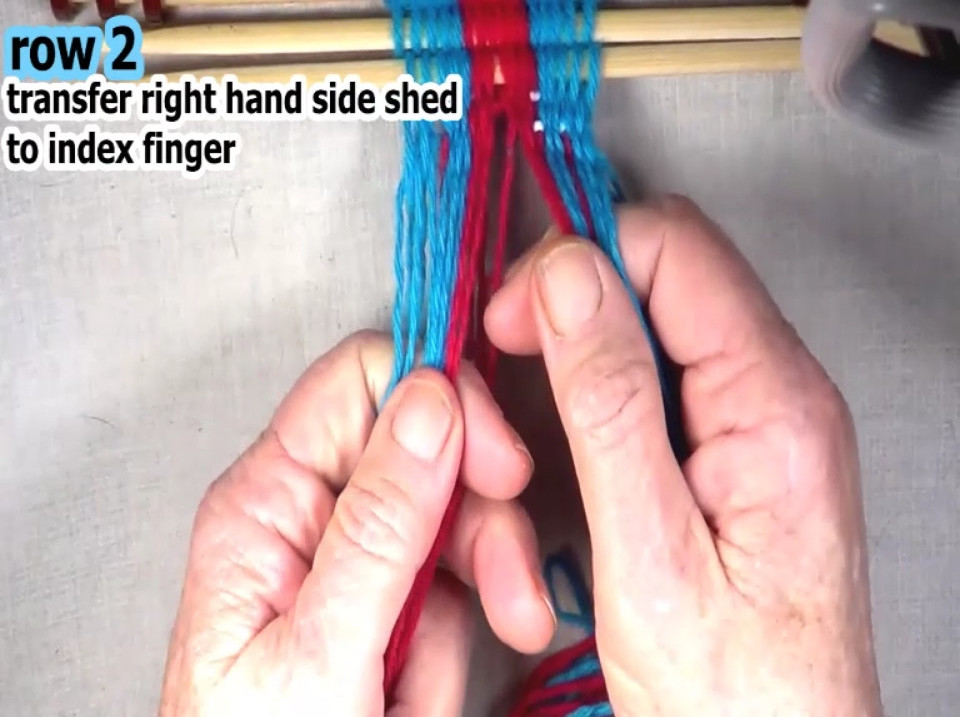
|
| Previous | Next |
Select the left side row 2 weft strand.
|
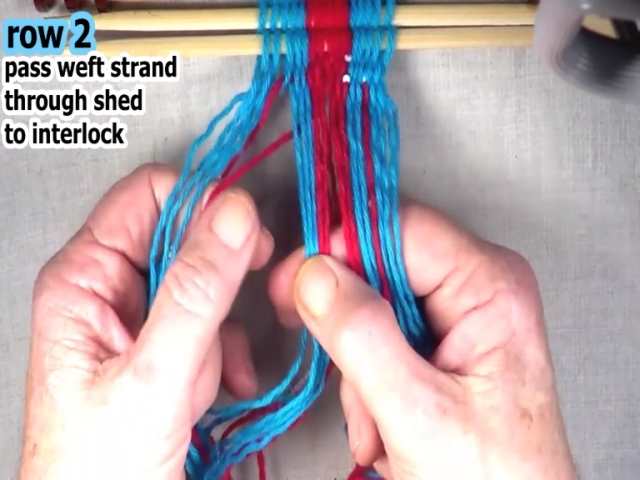
|
| Previous | Next |
Form the interlock on the left hand side of the row 2 weft strand.
Place the weft strand in the top layer of the shed. When the weft strand is placed in the top layer of the shed, the weft strand becomes a warp strand. The warp strand that was adjacent to the first interlock becomes the next part of the left side weft strand. Then secure the row 2 left hand side weft strand.
|

|
| Previous | Next |
Reverse the shed on the left hand side of row 2 to the first bead carrier strand.
Place a bead by sliding it along the bead carrier strand to its proper position.
|
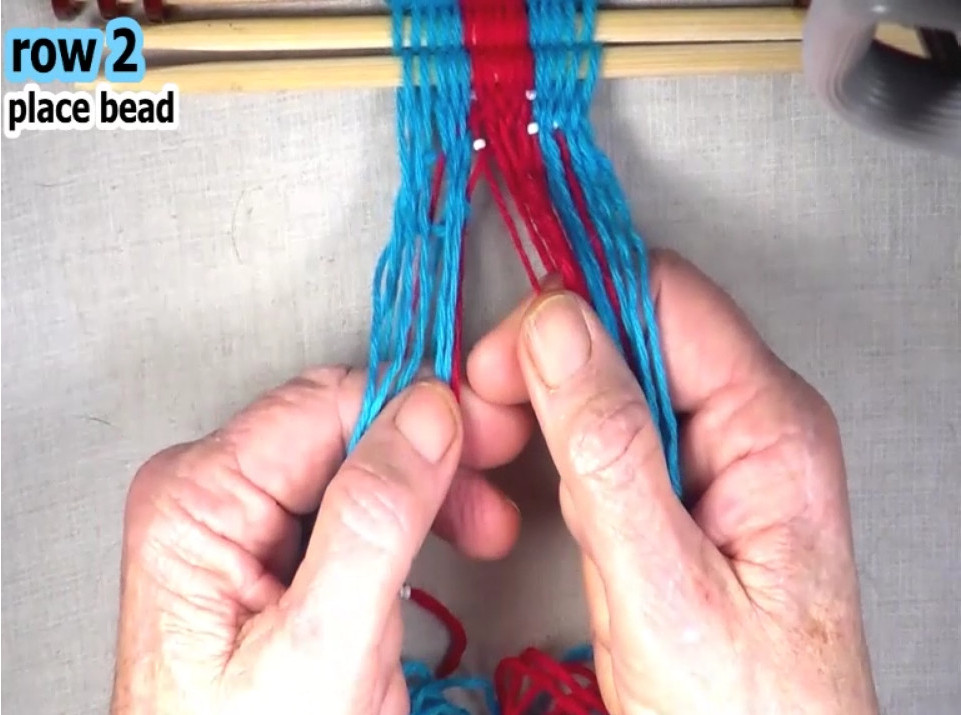
|
| Previous | Next |
|
Continue to reversing the left hand side shed to the second bead carrier strand.
Place a bead by sliding it along the bead carrier strand to its proper position.
|
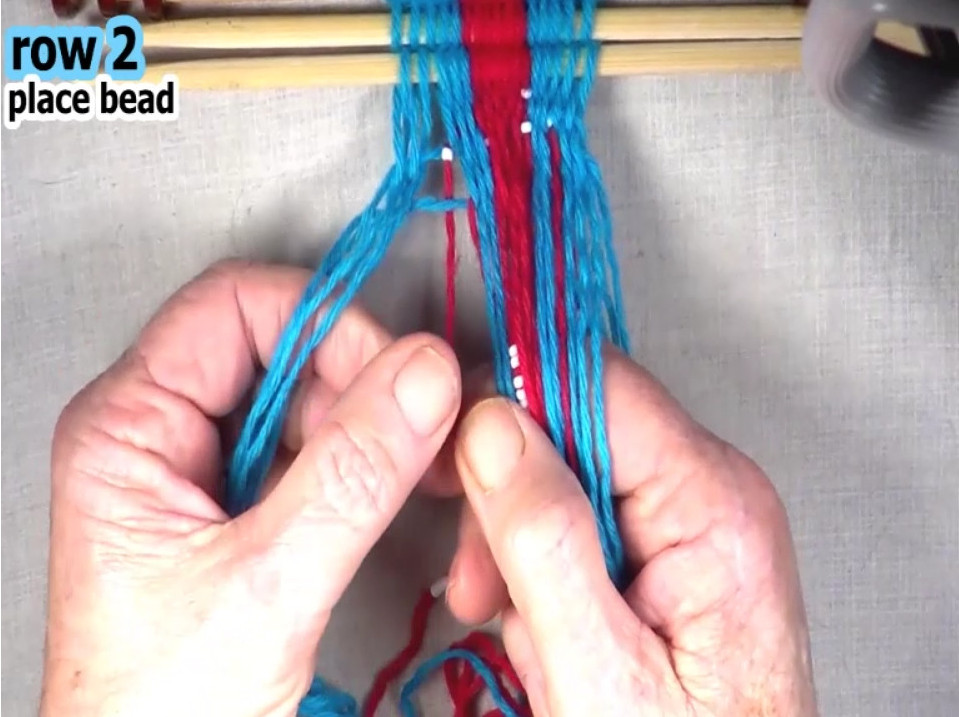
|
| Previous | Next |
|
Finish reversing the row 2 left hand side shed.
Transfer the left hand side shed to the left hand index finger. Set the row 2 weave.
Check individual strands to see that they are snug and even. [TIP] Use index finger as a beater. |
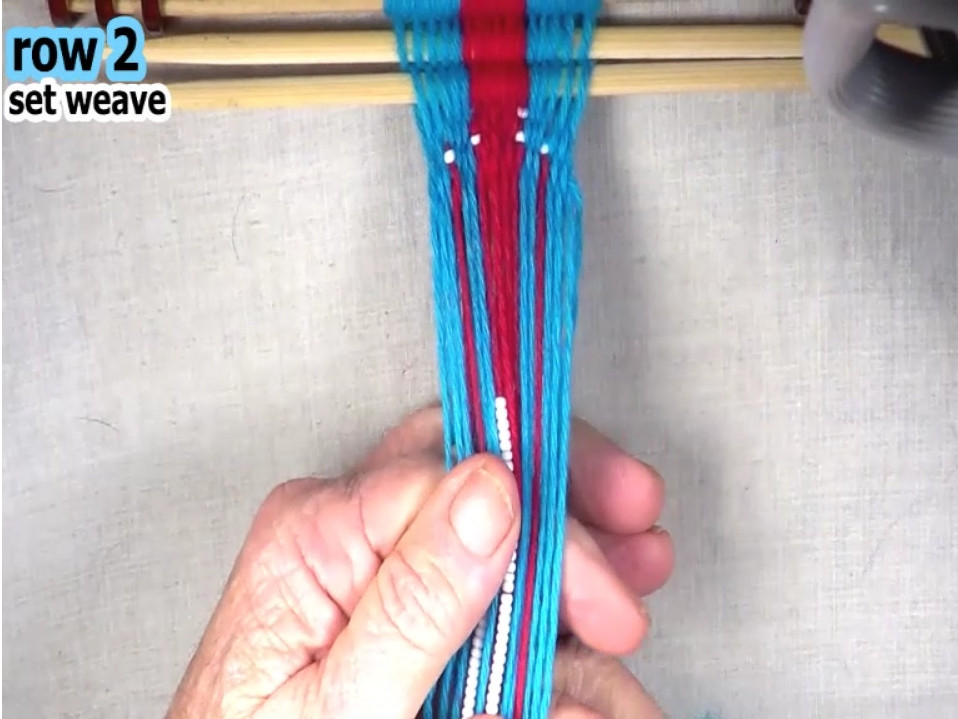
|
| Previous | Next |
>
Weave row 3.
|
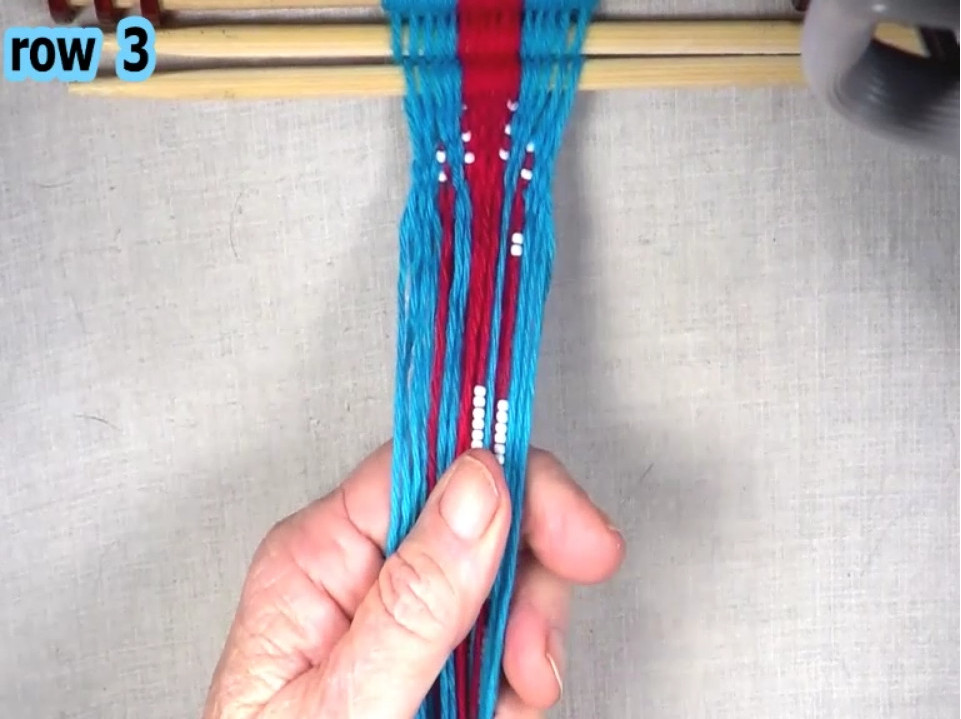
|
| Previous | Next |
Weave row 4.
|
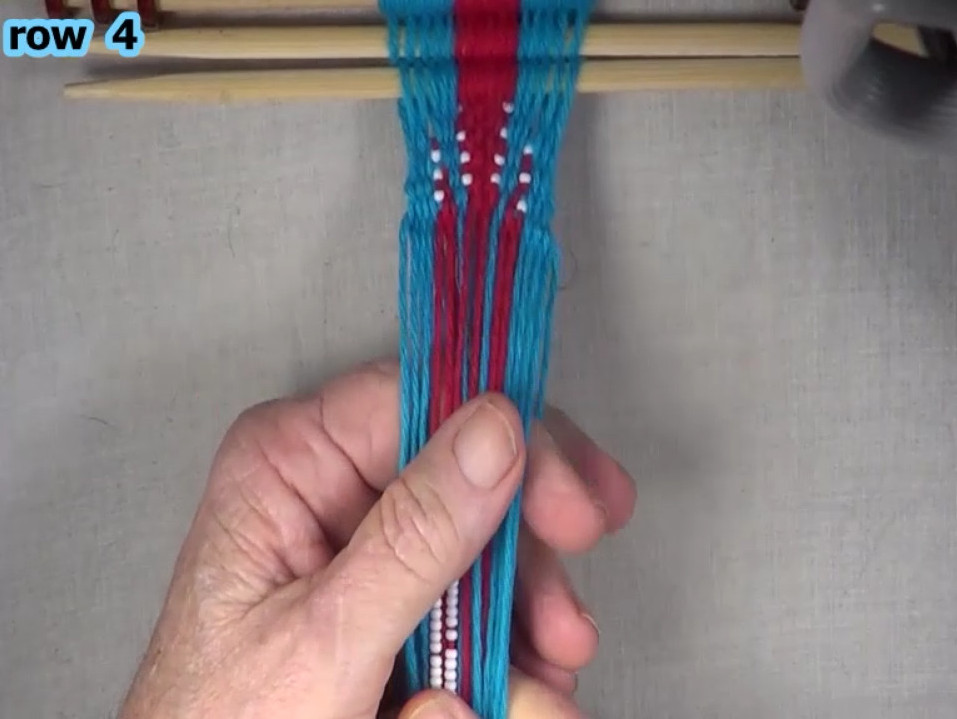
|
| Previous | Next |
Weave row 5.
|
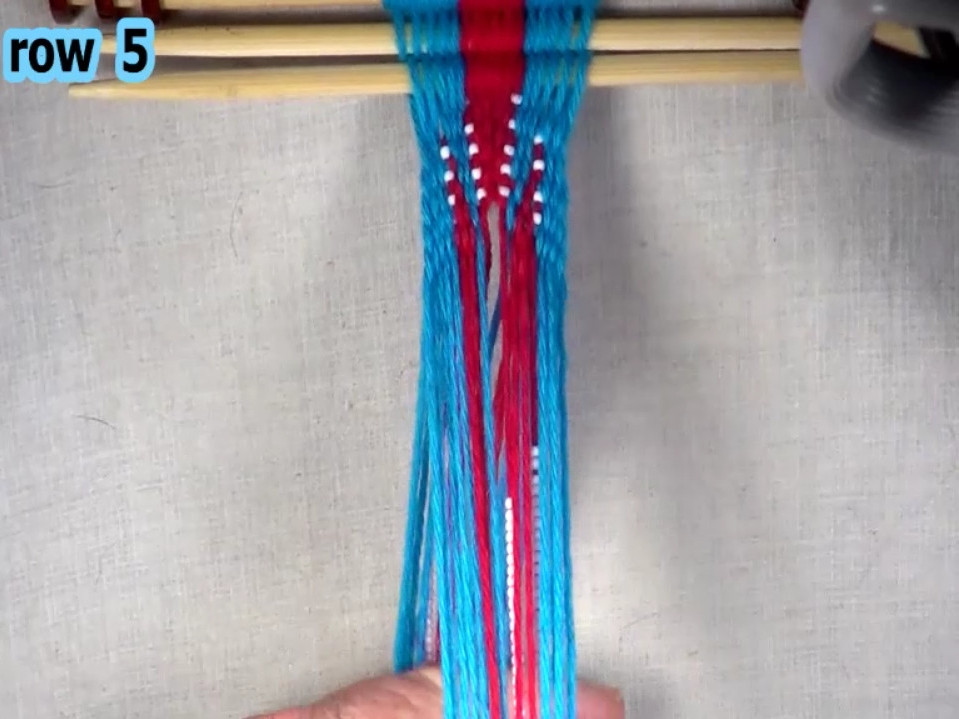
|
| Previous | Next |
Weaving row 6.
Cross the bead carrier strand that is to the right hand side of the middle over the left hand side bead carrier strand that is to the left hand side of the middle. |
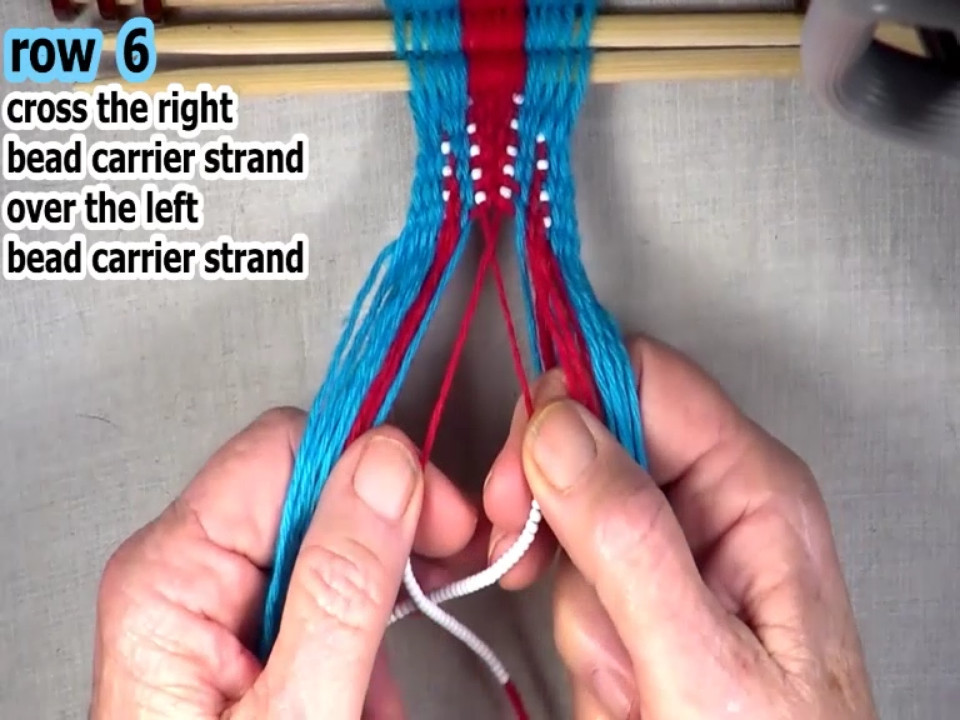
|
| Previous | Next |
Place the beads by sliding them along the carrier strands to there peoper positions.
|
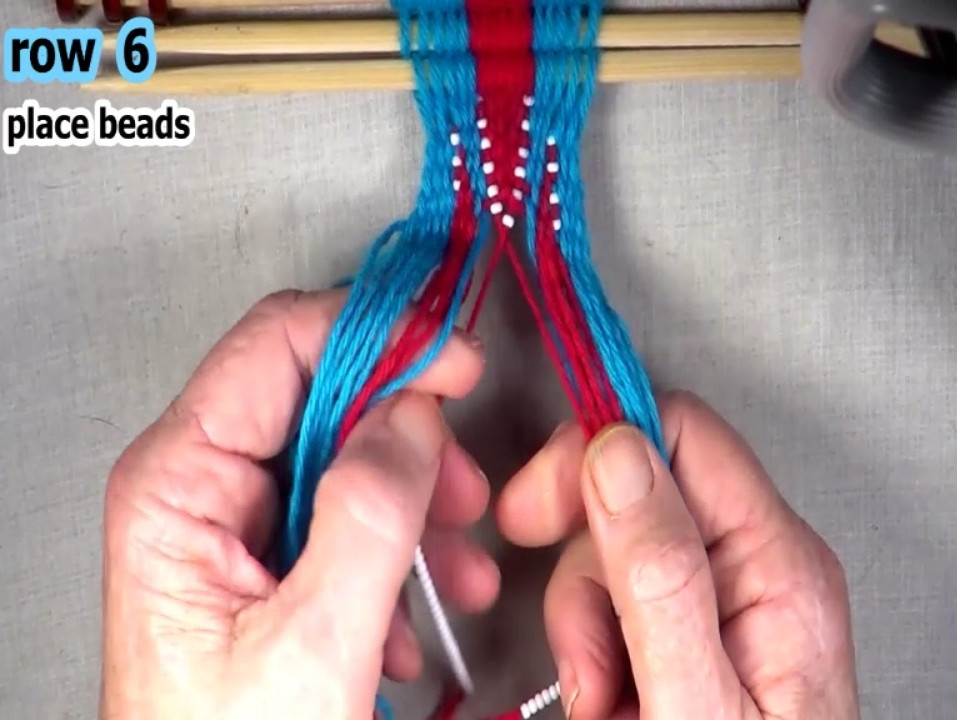
|
| Previous | Next |
|
When the beads are placed, the middle bead carrier strands will become the row 6 weft strands.
Form the right hand side row 6 interlock. |
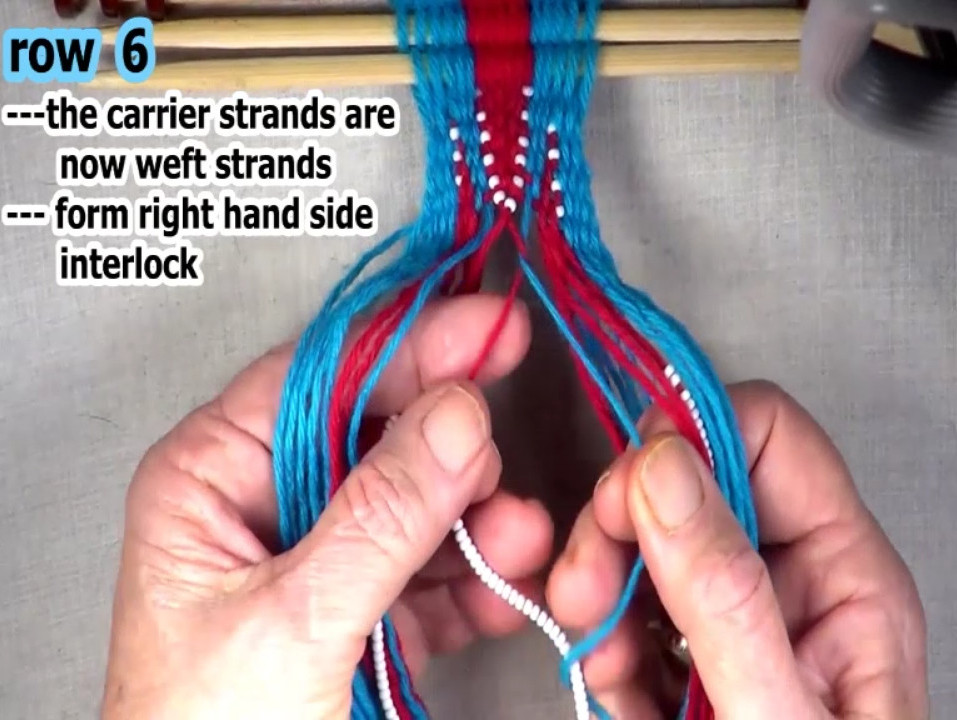
|
| Previous | Next |
|
Pass the weft strand through the shed to the right hand edge.
Secure the weft strand. Transfer the right hand side shed to the right hand index finger. |
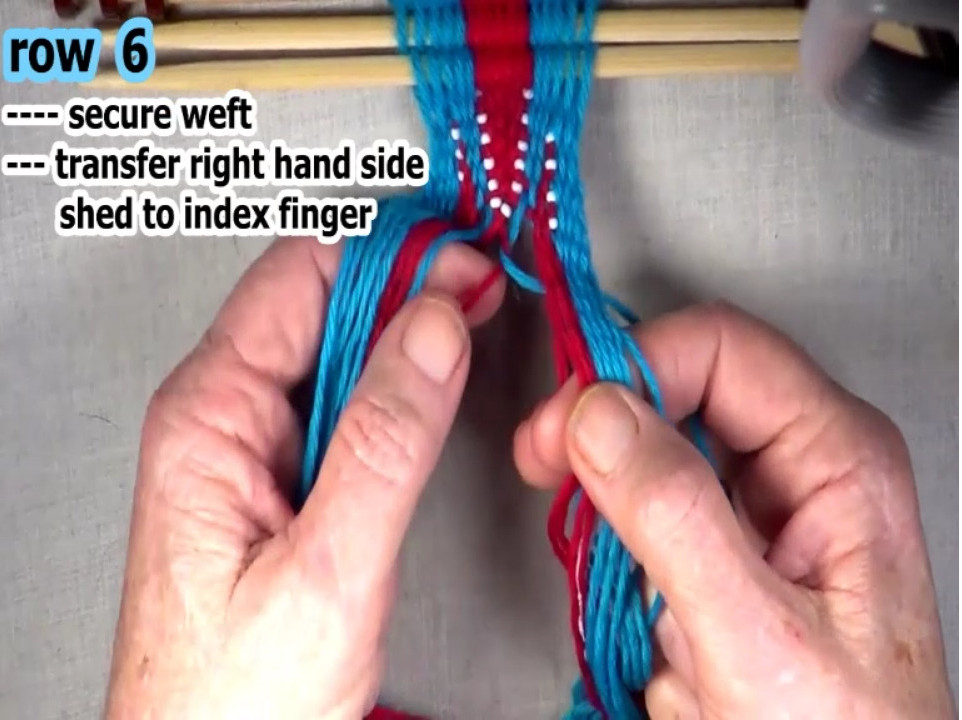
|
| Previous | Next |
|
Reverse the right hand side shed to the bead carrier strand.
Place a bead by sliding it along the bead carrier strand to its proper position.
|
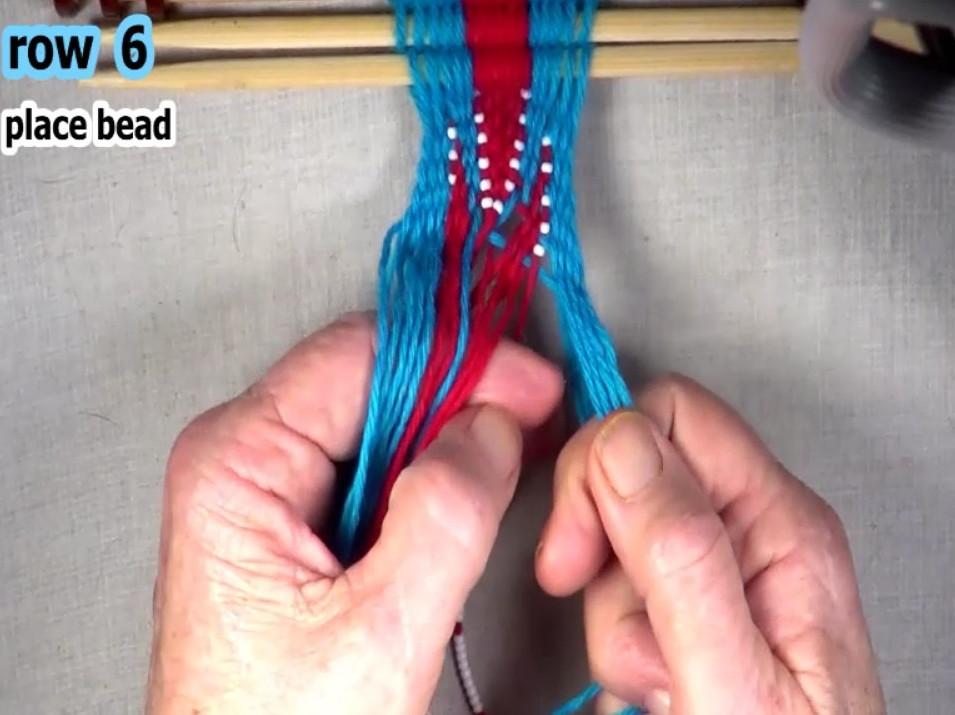
|
| Previous | Next |
|
Finish reversing the right hand side shed.
Transfer the right hand side shed to the right hand index finger. |
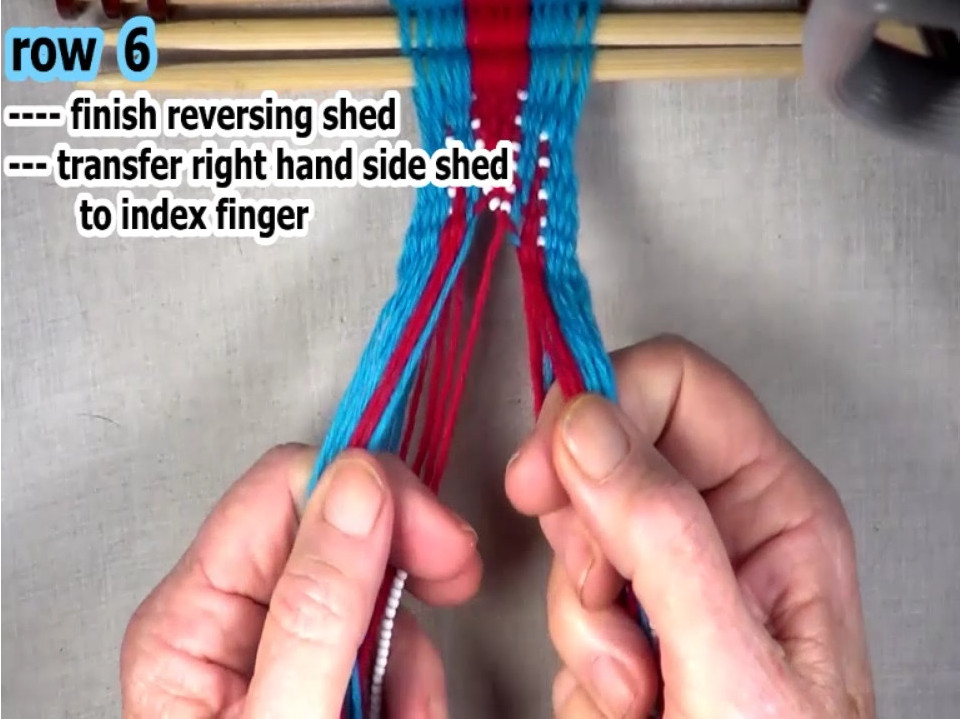
|
| Previous | Next |
|
Pass the weft strand through the shed to the left hand edge.
Secure the weft strand. Transfer the left hand side shed to the left hand index finger. |

|
| Previous | Next |
|
Reverse the left hand side shed to the bead carrier strand.
Place a bead by sliding it along the bead carrier strand to its proper position.
|
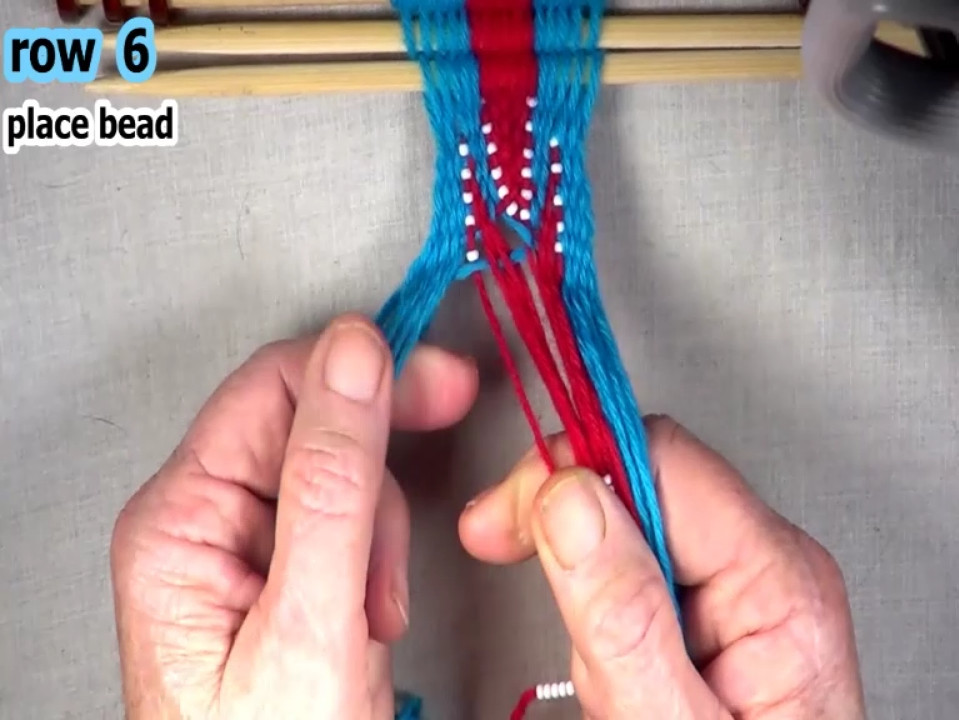
|
| Previous | Next |
|
Finish reversing the left hand side shed.
Set weave by pulling the layers of the shed in opposite directions. Check bead placement. |

|
| Previous | Next |
|
This completes the first segment of the arrowhead pattern.
[OBSERVE] Each segment is composed of two parts of the arrowhead.
|

|
| Previous | Top of Page |
|
|
|
|